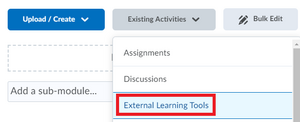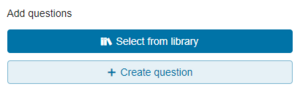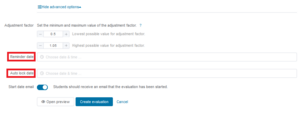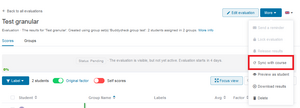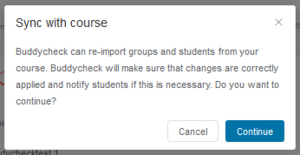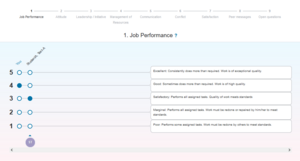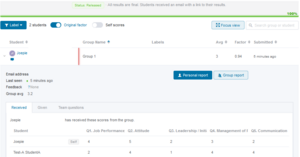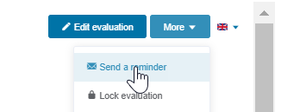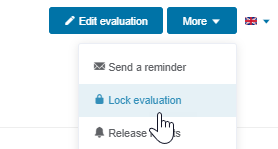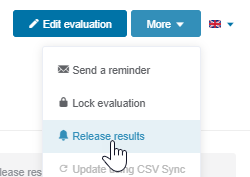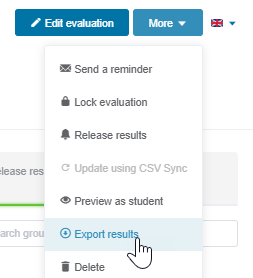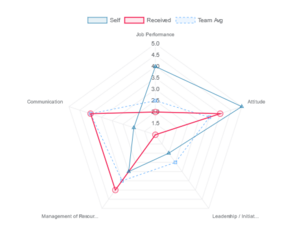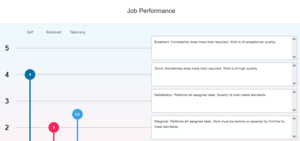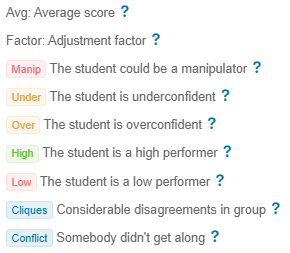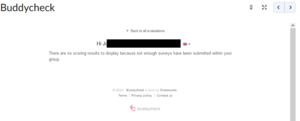Buddycheck
Buddycheck is a simple learning and peer evaluation tool which enables students to assess their team member’s performance in a group activity, as well as perform a self-assessment. The instructor has the flexibility to create various performance criteria or select from existing samples. Students are awarded an average score (excluding or including their self-score). They will receive feedback on the group dynamic and they obtain feedback on both the group dynamics and their performance relative to the group average. Buddycheck also utilises the research-based CATME framework for peer evaluation in groups.
Set up Buddycheck
-
- Go to Course > Content and click Add Existing Activities.
- Select External Learning Tools.
- Click on Buddycheck.
- Once added to the page, launch the newly added link.
- If it is the first time you use Buddycheck in this course, you receive a message, asking to activate it. In that case click Activate Buddycheck for this course.
-
You can now create your first evaluation.
- Click Create evaluation.
- Enter an Evaluation title or select a previously made evaluation as template.
- Select predefined Brightspace groups.
Groups in Buddycheck will be synced with Brightspace groups.
4. Enter an evaluation Start and End date.
5. Add your Peer questions (about the other group members) and Team questions (about the Team as a whole). A set of Main questions is selected by default. These questions can be viewed, edited or deleted from your evaluation. You can change the order of questions using drag and drop. Move your mouse over the =-icon for the drag and drop symbol to appear.
Please keep in mind that as course manager you will always be able to see the answers of individual students to the peer questions. You have the choice to make them visible between students. The default setting is that between students the answers are anonymous.
To create new questions, fill in the required question information and click Create question.
- Click on Select from library to import custom questions from an old course you were involved in as Course Manager.
- You can choose to enable Open questions to ask students about the team or the course in general. This can also be used if you want students to send you a private message about the group. The reactions are only visible to the instructor.
- If you want students to send peers a message, enable Peer messages (you can choose to make the reactions anonymous to the receiver or not).
- In Advanced Options you can set whether you want students to receive an automatic reminder to submit their evaluation by setting a Reminder Date. Here you can also set the date to automatically lock your evaluation. When locked, the results are final and cannot be submitted anymore. You can optionally release the results, this is not done automatically. And you can set here whether you want the student to receive a Buddycheck email that the evaluation has started.
- Before you save you can click Open preview, to open a preview of the evaluation.
- Click Create evaluation when you are done.
- The page will reload and you will see the new evaluation listed on the Peer evaluations page. You can create another by clicking the +Create evaluation button. All the evaluations will be listed in the same Buddycheck link, so you don’t have to create multiple links (as mentioned in step 1).
-
If you need to add or remove a student to or from a group, you can change this within the Brightspace groups you have used for the evaluation. To learn more about editing Brightspace groups, see this page.
After you have edited the groups in Brightspace, open Buddycheck within your course and do the following:- Open your evaluation
- Click More and select Sync with course.
- Click Continue in the pop up warning
- You will see a note on the top of the page saying ‘Students and groups successfully synced’
-
- When students click on Buddycheck they will see the evaluations created in your course. To start, they will click Begin evaluation.
- The student selects a rating for each criterion. The student clicks Next to select ratings for the following criteria until they have the option to Submit evaluation.
- You will be able to monitor which individuals and groups have completed the task and what scores individuals have given and received.
- Although you have set a due date, students will be able to complete the evaluation until you Lock the evaluation. Students will see that their submission is overdue.
- If students submit an evaluation after the due date, Buddycheck will indicate by how many days the evaluation is overdue.
- You can allow a grace period and Send a reminder to students who have not completed their evaluation, or simply click Lock evaluation.
- If a student needs a reminder to finish the evaluation or needs to make the evaluation again you can select the student and Send e-mail or Reopen. Clear removes the results added by the student, Remove removes the student from the list.
If a student does not complete the evaluation, there is less peer evaluation data in the group of this student. This means that the results will be less reliable. That being said, an average and an adjustment factor of a student is calculated using completed evaluation data from the peers in the group. So you can just use all results even if not 100% of students have completed the evaluation.
-
- To release feedback to students, select More and click Release results.
- Students will now be able to review their feedback within Buddycheck and receive an e-mail with a summary. Select More and click Export results to download a complete summary of the evaluation. You can choose to include or exclude self scores in the results.
- To view a student’s feedback or the group results, Select the student and click Personal Report or Group report.
- Students initially see a graphical representation of how they performed across all criteria.
- Students then see more detail on each criterion, comparing their self-score, received score and team average.
- You can choose to include or exclude the students’ Self-scores in the average score calculation in the Instructor view.
- Where certain team dynamics occurred, they will be labelled. See for example the Conflict label below.
- The label key can be found below.
- If you have enabled Peer messages to Instructor and received one, you will see this text/chat icon next to the student’s name
 .
. - If you enabled Anonymous for receiving student when setting up the evaluation, the feedback will be visible to the student but without the name of the sender.
If only one student within a group has completed the evaluation, the results will not be visible to students to preserve the anonymity of this one student. Students will instead see the message below:
Need support?
Get in touch with us! We are happy to help.
